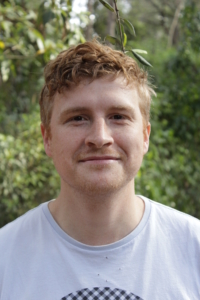Biography
Ben Routley is a research assistant with the School of Electrical Engineering and Computer Science at The University of Newcastle, with a specialization in Near-field optics. He is interested in probe based lithography and computer modelling. Currently he is completing a PhD with the School of Mathematical and Physical Sciences with a specialization in Organic Photo-voltaic devices.
Publications
2025
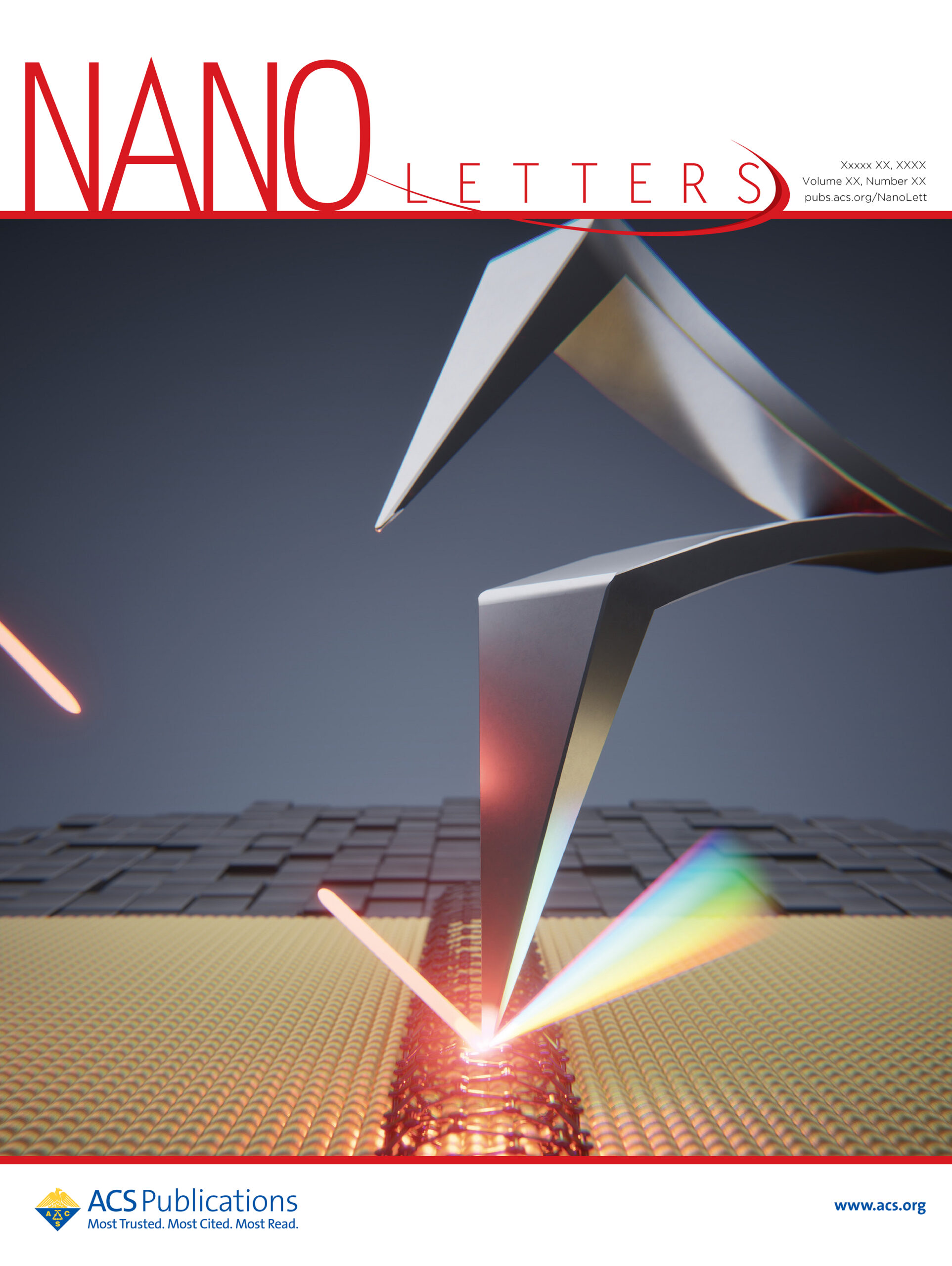
M. G. Ruppert; B. S. Routley; L. R. McCourt; Y. K. Yong; A. J. Fleming
Modulated-Illumination Intermittent-Contact Tip-Enhanced Raman Spectroscopy Journal Article
In: ACS Nano Letters, 2025.
@article{Ruppert2025,
title = {Modulated-Illumination Intermittent-Contact Tip-Enhanced Raman Spectroscopy},
author = {M. G. Ruppert and B. S. Routley and L. R. McCourt and Y. K. Yong and A. J. Fleming},
doi = {https://doi.org/10.1021/acs.nanolett.4c06397},
year = {2025},
date = {2025-03-13},
urldate = {2025-03-13},
journal = {ACS Nano Letters},
abstract = {This article presents a proof-of-concept for a new imaging method that combines tip-enhanced Raman spectroscopy with intermittent-contact atomic force microscopy to provide simultaneous nanometer-scale mechanical imaging with chemical contrast. The foremost difference from a standard tip-enhanced Raman microscope is the Raman illumination, which is modulated by the cantilever drive signal so that illumination is only active when the tip is close to the surface. This approach significantly reduces contact forces and thermal damage due to constant illumination while simultaneously reducing background Raman signals. Near-field optical and dynamic cantilever simulations highlight the effect of the imaging parameters on the tip–sample force and the evanescent field enhancement. The experimental images obtained with this new imaging method demonstrate a lateral resolution sufficient to identify single-walled carbon nanotube bundles with a full width at half-maximum of 20 nm.},
keywords = {},
pubstate = {published},
tppubtype = {article}
}
2024
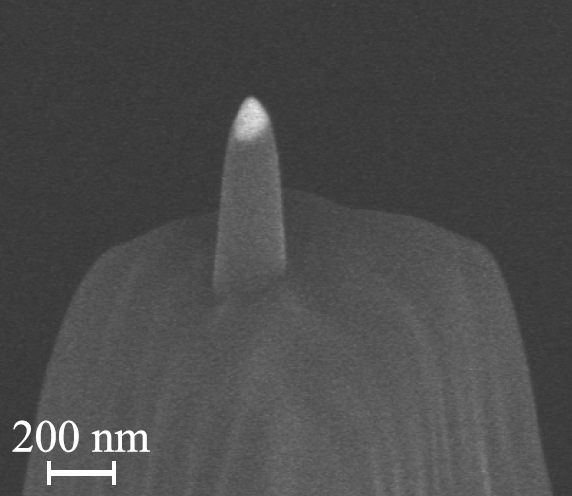
L. R. McCourt; B. S. Routley; M. G. Ruppert; A. J. Fleming
Feasibility of gold nanocones for collocated tip-enhanced Raman spectroscopy and atomic force microscope imaging Journal Article Forthcoming
In: Journal of Raman Spectroscopy, Forthcoming, ISSN: 1097-4555.
@article{J23a,
title = {Feasibility of gold nanocones for collocated tip-enhanced Raman spectroscopy and atomic force microscope imaging },
author = {L. R. McCourt and B. S. Routley and M. G. Ruppert and A. J. Fleming},
url = {https://www.precisionmechatronicslab.com/wp-content/uploads/2024/02/J23a-Preprint.pdf},
doi = {10.1002/jrs.6625},
issn = {1097-4555},
year = {2024},
date = {2024-02-01},
urldate = {2024-02-01},
journal = {Journal of Raman Spectroscopy},
abstract = {Microcantilever probes for tip-enhanced Raman spectroscopy (TERS) have a grainy metal coating that may exhibit multiple plasmon hotspots near the tip apex, which may compromise spatial resolution and introduce imaging artefacts. It is also possible that the optical hotspot may not occur at the mechanical apex, which introduces an offset between TERS and atomic force microscope maps. In this article, a gold nanocone TERS probe is designed and fabricated for 638 nm excitation. The imaging performance is compared to grainy probes by analysing high-resolution TERS cross-sections of single-walled carbon nanotubes. Compared to the tested conventional TERS probes, the nanocone probe exhibited a narrow spot diameter, comparable optical contrast, artefact-free images, and collocation of TERS and atomic force microscope topographic maps. The spot diameter was 12.5 nm and 19 nm with 638 nm and 785 nm excitation, respectively. These results were acquired using a single gold nanocone probe to experimentally confirm feasibility. Future work will include automating the fabrication process and statistical analysis of many probes.},
keywords = {},
pubstate = {forthcoming},
tppubtype = {article}
}
2022
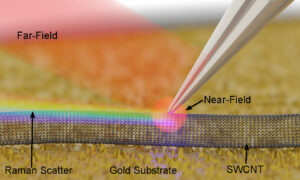
L. R. McCourt; B. S. Routley; M. G. Ruppert; V. J. Keast; C. I. Sathish; R. Borah; R. V. Goreham; A. J. Fleming
In: ACS Applied Nano Materials, vol. 5, iss. 7, pp. 9024-9033, 2022, ISSN: 2574-0970.
@article{nokey,
title = {Single-Walled Carbon Nanotubes as One-Dimensional Scattering Surfaces for Measuring Point Spread Functions and Performance of Tip-Enhanced Raman Spectroscopy Probes},
author = {L. R. McCourt and B. S. Routley and M. G. Ruppert and V. J. Keast and C. I. Sathish and R. Borah and R. V. Goreham and A. J. Fleming},
url = {https://www.precisionmechatronicslab.com/wp-content/uploads/2023/02/J22i.pdf},
doi = {10.1021/acsanm.2c01274},
issn = {2574-0970},
year = {2022},
date = {2022-06-21},
urldate = {2022-06-21},
journal = {ACS Applied Nano Materials},
volume = {5},
issue = {7},
pages = {9024-9033},
abstract = {This Article describes a method for the characterization of the imaging performance of tip-enhanced Raman spectroscopy probes. The proposed method identifies single-walled carbon nanotubes that are suitable as one-dimensional Raman scattering objects by using atomic force microscope maps and exciting the radial breathing mode using 785 nm illumination. High-resolution cross sections of the nanotubes are collected, and the point spread functions are calculated along with the optical contrast and spot diameter. The method is used to characterize several probes, which results in a set of imaging recommendations and a summary of limitations for each probe. Elemental analysis and boundary element simulations are used to explain the formation of multiple peaks in the point spread functions as a consequence of random grain formation on the probe surface.},
keywords = {},
pubstate = {published},
tppubtype = {article}
}
2020
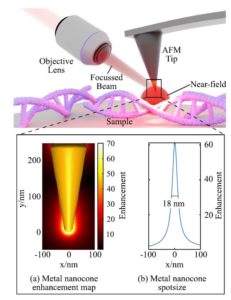
L. McCourt; M. G. Ruppert; B. S. Routley; S. Indirathankam; A. J. Fleming
A comparison of gold and silver nanocones and geometry optimisation for tip-enhanced microscopy Journal Article
In: Journal of Raman Spectroscopy, vol. 51, iss. 11, pp. 2208-2216, 2020.
@article{McCourt2020,
title = {A comparison of gold and silver nanocones and geometry optimisation for tip-enhanced microscopy},
author = {L. McCourt and M. G. Ruppert and B. S. Routley and S. Indirathankam and A. J. Fleming},
url = {https://www.precisionmechatronicslab.com/wp-content/uploads/2020/09/J20e.pdf},
doi = {https://doi.org/10.1002/jrs.5987},
year = {2020},
date = {2020-11-01},
urldate = {2020-08-24},
journal = {Journal of Raman Spectroscopy},
volume = {51},
issue = {11},
pages = {2208-2216},
abstract = {In this article, boundary element method simulations are used to optimise the geometry of silver and gold nanocone probes to maximise the localised electric field enhancement and tune the near-field resonance wavelength. These objectives are expected to maximise the sensitivity of tip-enhanced Raman microscopes. Similar studies have used limited parameter sets or used a performance metric other than localised electric field enhancement. In this article, the optical responses for a range of nanocone geometries are simulated for excitation wavelengths ranging from 400 to 1000 nm. Performance is evaluated by measuring the electric field enhancement at the sample surface with a resonant illumination wavelength. These results are then used to determine empirical models and derive optimal nanocone geometries for a particular illumination wavelength and tip material. This article concludes that gold nanocones are expected to provide similar performance to silver nanocones at red and nearinfrared wavelengths, which is consistent with other results in the literature. In this article, 633 nm is determined to be the shortest usable illumination wavelength for gold nanocones. Below this limit, silver nanocones will provide superior enhancement. The use of gold nanocone probes is expected to dramatically improve probe lifetime, which is currently measured in hours for silver coated probes. Furthermore, the elimination of passivation coatings is expected to enable smaller probe radii and improved topographical resolution.},
keywords = {},
pubstate = {published},
tppubtype = {article}
}
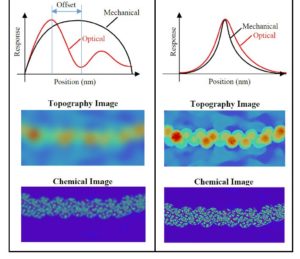
A. J. Fleming; M. G. Ruppert; B. S. Routley; L. McCourt
Overcoming the Limitations of Tip Enhanced Raman Spectroscopy with Intermittent Contact AFM Conference
8th Multifrequency AFM Conference, Madrid, Spain, 2020.
@conference{Fleming2020,
title = {Overcoming the Limitations of Tip Enhanced Raman Spectroscopy with Intermittent Contact AFM},
author = {A. J. Fleming and M. G. Ruppert and B. S. Routley and L. McCourt},
year = {2020},
date = {2020-10-27},
booktitle = {8th Multifrequency AFM Conference},
address = {Madrid, Spain},
abstract = {Tip enhanced Raman spectroscopy (TERS) is a promising technique for mapping the chemical composition of surfaces with molecular scale. However, current TERS methods are limited by a number of issues including high tip-sample forces, high laser power, low topographical resolution, and short probe lifetime. As a result, TERS methods are best suited to robust samples that can tolerate high optical intensity. To overcome these issues and extend the application of TERS to delicate samples, a number of new probes andimaging modes are in development at the University of Newcastle. This talk will provide an overview of these methods and present preliminary results, including new methods for optical probe optimization and fabrication, and a new dynamic-mode AFM method to reduce contact forces and applied laser power.},
keywords = {},
pubstate = {published},
tppubtype = {conference}
}
2019
L. McCourt; B. S. Routley; M. G. Ruppert; A. J. Fleming
Resolution and Enhancement of Probes for Tip Enhanced Raman Spectroscopy Conference
International Conference on Nanophotonics and Micro/Nano Optics (NANOP), Munich, Germany, 2019.
@conference{McCourt2019,
title = {Resolution and Enhancement of Probes for Tip Enhanced Raman Spectroscopy},
author = {L. McCourt and B. S. Routley and M. G. Ruppert and A. J. Fleming},
year = {2019},
date = {2019-09-04},
booktitle = {International Conference on Nanophotonics and Micro/Nano Optics (NANOP)},
journal = {International Conference Nanophotonics and Micro/Nano Optics},
address = {Munich, Germany},
abstract = {Two photon apertureless nearfield lithography allows sub diffraction limited features for integrated circuit production. It involves exciting surface plasmons on a metallic atomic force microscopy probe, which generates an enhancement of the localised electric field, exposing a photoresist. Costing less than extreme ultra violet lithography, and reducing exposure from scattered light compared to one photon nearfield lithography, this technique is suited for device prototyping or low volume production. The work here considers the material and geometry of an ideal AFM probe in terms of resolution (producing the smallest features) and electric field enhancement.},
keywords = {},
pubstate = {published},
tppubtype = {conference}
}
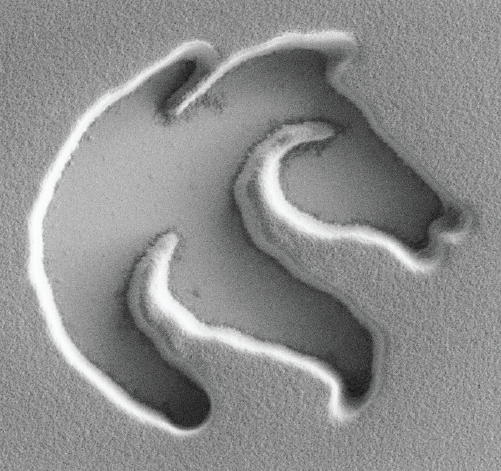
A. J. Fleming; O. T. Ghalehbeygi; B. S. Routley; A. G. Wills
Scanning Laser Lithography with Constrained Quadratic Exposure Optimization Journal Article
In: IEEE Transactions on Control Systems Technology, vol. 27, no. 5, pp. 2221-2228, 2019, ISBN: 1063-6536.
@article{J19e,
title = {Scanning Laser Lithography with Constrained Quadratic Exposure Optimization},
author = {A. J. Fleming and O. T. Ghalehbeygi and B. S. Routley and A. G. Wills},
url = {https://www.precisionmechatronicslab.com/wp-content/uploads/2020/02/J19e.pdf},
doi = {10.1109/TCST.2018.2836910},
isbn = {1063-6536},
year = {2019},
date = {2019-09-01},
journal = {IEEE Transactions on Control Systems Technology},
volume = {27},
number = {5},
pages = {2221-2228},
abstract = {Scanning laser lithography is a maskless lithography method for selectively exposing features on a film of photoresist. A set of exposure positions and beam energies are required to optimally reproduce the desired feature pattern. The task of determining the exposure energies is inherently non-linear due to the photoresist model and the requirement for only positive energy. In this article, a nonlinear programming approach is employed to find an optimal exposure profile that minimizes the feature error and total exposure energy. This method is demonstrated experimentally to create a features with sub-wavelength geometry.},
keywords = {},
pubstate = {published},
tppubtype = {article}
}
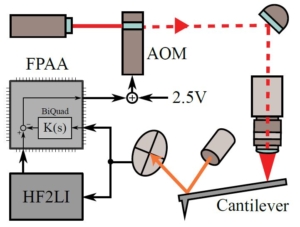
M. G. Ruppert; B. S. Routley; A. J. Fleming; Y. K. Yong; G. E. Fantner
Model-based Q Factor Control for Photothermally Excited Microcantilevers Proceedings Article
In: Int. Conference on Manipulation, Automation and Robotics at Small Scales (MARSS), Helsinki, Finland, 2019, ISSN: 978-1-7281-0948-0, (This work was supported by the Australian Research Council Discovery Project DP170101813).
@inproceedings{Ruppert2019,
title = {Model-based Q Factor Control for Photothermally Excited Microcantilevers},
author = {M. G. Ruppert and B. S. Routley and A. J. Fleming and Y. K. Yong and G. E. Fantner},
url = {https://www.precisionmechatronicslab.com/wp-content/uploads/2021/02/C19b.pdf},
doi = {10.1109/MARSS.2019.8860969},
issn = {978-1-7281-0948-0},
year = {2019},
date = {2019-07-01},
urldate = {2019-07-01},
booktitle = {Int. Conference on Manipulation, Automation and Robotics at Small Scales (MARSS)},
address = {Helsinki, Finland},
abstract = {Photothermal excitation of the cantilever for dynamic atomic force microscopy (AFM) modes is an attractive actuation method as it provides clean cantilever actuation leading to well-defined frequency responses. Unlike conventional piezo-acoustic excitation of the cantilever, it allows for model-based quality (Q) factor control in order to increase the cantilever tracking bandwidth for tapping-mode AFM or to reduce resonant ringing for high-speed photothermal offresonance tapping (PORT) in ambient conditions. In this work, we present system identification, controller design and experimental results on controlling the Q factor of a photothermally driven cantilever. The work is expected to lay the groundwork for future implementations for high-speed PORT imaging in ambient conditions.},
note = {This work was supported by the Australian Research Council Discovery Project DP170101813},
keywords = {},
pubstate = {published},
tppubtype = {inproceedings}
}
2018
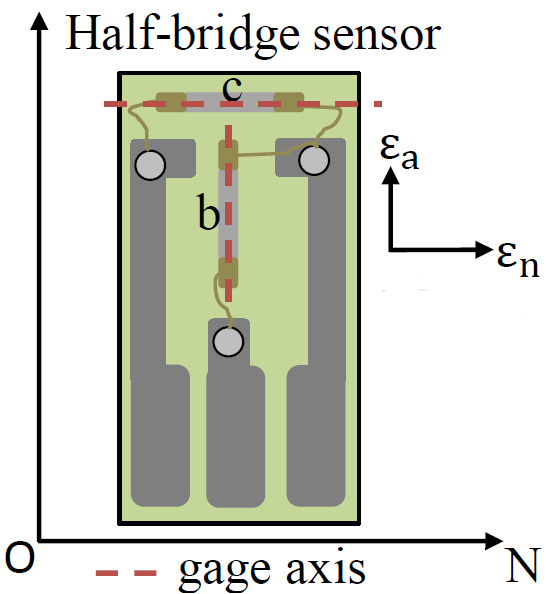
M. Omidbeike; B. S. Routley; A. J. Fleming
Independent Estimation of Temperature and Strain in Tee-Rosette Piezoresistive Strain Sensor Proceedings Article
In: IEEE International Conference on Advanced Intelligent Mechatronics, Auckland, New Zealand, 2018.
@inproceedings{C18d,
title = {Independent Estimation of Temperature and Strain in Tee-Rosette Piezoresistive Strain Sensor},
author = {M. Omidbeike and B. S. Routley and A. J. Fleming},
url = {https://www.precisionmechatronicslab.com/wp-content/uploads/2021/02/C18d.pdf},
doi = {10.1109/AIM.2018.8452304},
year = {2018},
date = {2018-07-04},
booktitle = {IEEE International Conference on Advanced Intelligent Mechatronics},
address = {Auckland, New Zealand},
abstract = {This article proposes a novel technique for independent measurement of strain and temperature in piezoresistive strain sensors configured in a tee-rosette. The most notable property of piezoresistive sensors is their easy integration into MEMS fabrication processes and nanopositioning systems which makes them highly advantageous for both size and cost. The foremost disadvantage associated with piezoresistive sensors is high temperature sensitivity. The proposed estimator allows independent estimation of strain and temperature, which eliminates drift due to temperature variation. Experimental results are presented for motion sensing of a piezoelectric stack actuator which shows a strain measurement with an accuracy of +/-6% over a temperature range of -15C to 40C.},
keywords = {},
pubstate = {published},
tppubtype = {inproceedings}
}
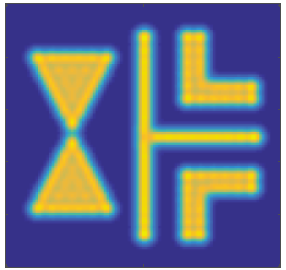
O. T. Ghalehbeygi; J. O'Connor; B. S. Routley; A. J. Fleming
Iterative Deconvolution for Exposure Planning in Scanning Laser Lithography Proceedings Article
In: American Control Conference, Milwaukee, WI, 2018.
@inproceedings{C18c,
title = {Iterative Deconvolution for Exposure Planning in Scanning Laser Lithography},
author = {O. T. Ghalehbeygi and J. O'Connor and B. S. Routley and A. J. Fleming},
url = {https://www.precisionmechatronicslab.com/wp-content/uploads/2021/02/C18c.pdf},
doi = {10.23919/ACC.2018.8431550},
year = {2018},
date = {2018-06-27},
booktitle = {American Control Conference},
address = {Milwaukee, WI},
abstract = {Laser scanning lithography is a maskless method for exposing photoresist during semiconductor manufacturing. In this method, the power of a focused beam is modulated while scanning the photoresist. This article describes an iterative deconvolution method for determining the exposure pattern. This approach is computationally efficient as there is no gradient calculation. Simulations demonstrate the accurate fabrication of a feature with sub-wavelength geometry.},
keywords = {},
pubstate = {published},
tppubtype = {inproceedings}
}
2017
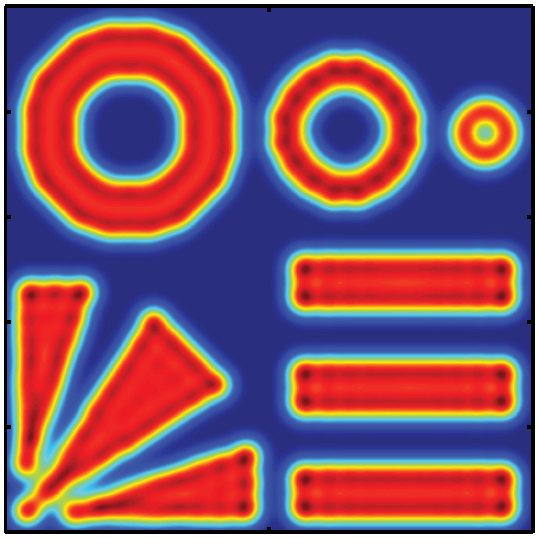
O. T. Ghalehbeygi; A. G. Wills; B. S. Routley; A. J. Fleming
Gradient-based optimization for efficient exposure planning in maskless lithography Journal Article
In: Journal of Micro/Nanolithography, MEMS, and MOEMS, vol. 16, no. 3, pp. 033507, 2017.
@article{J17j,
title = {Gradient-based optimization for efficient exposure planning in maskless lithography},
author = {O. T. Ghalehbeygi and A. G. Wills and B. S. Routley and A. J. Fleming},
url = {https://www.precisionmechatronicslab.com/wp-content/uploads/2017/09/J17j.pdf},
doi = {10.1117/1.JMM.16.3.033507},
year = {2017},
date = {2017-09-01},
journal = {Journal of Micro/Nanolithography, MEMS, and MOEMS},
volume = {16},
number = {3},
pages = {033507},
abstract = {Scanning laser lithography is a maskless method for exposing photoresist during semiconductor manufacturing. In this method, the energy of a focused beam is controlled while scanning the beam or substrate. With a positive photoresist material, areas that receive an exposure dosage over the threshold energy are dissolved during development. The surface dosage is related to the exposure profile by a convolution and nonlinear function, so the optimal exposure profile is nontrivial. A gradient-based optimization method for determining an optimal exposure profile, given the desired pattern and models of the beam profile and photochemistry, is described. This approach is more numerically efficient than optimal barrier-function-based methods but provides near-identical results. This is demonstrated through simulation and experimental lithography},
keywords = {},
pubstate = {published},
tppubtype = {article}
}
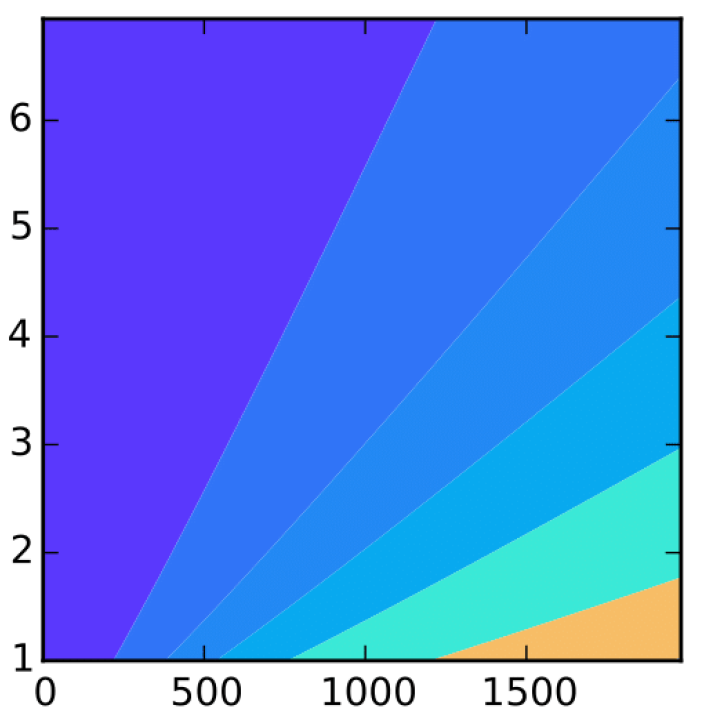
B. S. Routley; F. Miteff; A. J. Fleming
Modelling and Control of Nitrogen Partial Pressure for Prophylaxis and Treatment of Air Embolism Proceedings Article
In: American Control Conference, Seattle, WA, 2017.
@inproceedings{C17a,
title = {Modelling and Control of Nitrogen Partial Pressure for Prophylaxis and Treatment of Air Embolism},
author = {B. S. Routley and F. Miteff and A. J. Fleming},
url = {https://www.precisionmechatronicslab.com/wp-content/uploads/2017/03/modelling-control-nitrogen-10.pdf},
year = {2017},
date = {2017-05-01},
booktitle = {American Control Conference},
address = {Seattle, WA},
keywords = {},
pubstate = {published},
tppubtype = {inproceedings}
}
2016
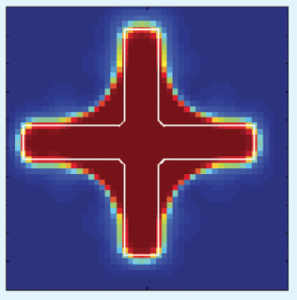
A. J. Fleming; A. G. Wills; B. S. Routley
Exposure Optimization in Scanning Laser Lithography Journal Article
In: IEEE Potentials, vol. 35, no. 4, pp. 33-39, 2016, ISSN: 0278-6648.
@article{J16b,
title = {Exposure Optimization in Scanning Laser Lithography},
author = {A. J. Fleming and A. G. Wills and B. S. Routley},
url = {https://www.precisionmechatronicslab.com/wp-content/uploads/2016/08/J16b.pdf},
doi = {10.1109/MPOT.2016.2540039},
issn = {0278-6648},
year = {2016},
date = {2016-12-01},
journal = {IEEE Potentials},
volume = {35},
number = {4},
pages = {33-39},
keywords = {},
pubstate = {published},
tppubtype = {article}
}
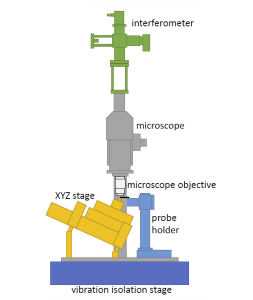
B. S. Routley; A. J. Fleming
High Sensitivity Interferometer for on-Axis Detection of AFM Cantilever Deflection Proceedings Article
In: International Conference on Manipulation, Automation and Robotics at Small Scales, Paris, France, 2016.
@inproceedings{C16i,
title = {High Sensitivity Interferometer for on-Axis Detection of AFM Cantilever Deflection},
author = {B. S. Routley and A. J. Fleming},
year = {2016},
date = {2016-07-01},
booktitle = {International Conference on Manipulation, Automation and Robotics at Small Scales},
address = {Paris, France},
abstract = {A homodyne path stabilised Michelson based interferometer displacement sensor was developed. This sensor achieved a noise floor of 100 fm/rt(Hz), for frequencies higher than 100 kHz. A prototype AFM that integrated this sensor was developed. Using tapping mode, topography maps of an AFM test grid were produced. },
keywords = {},
pubstate = {published},
tppubtype = {inproceedings}
}
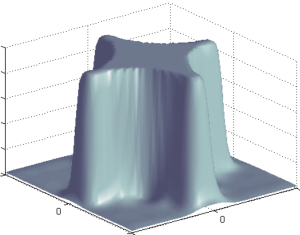
A. J. Fleming; A. G. Wills; O. T. Ghalehbeygi; B. S. Routley; B. Ninness
A Nonlinear Programming Approach to Exposure Optimization in Scanning Laser Lithography Proceedings Article
In: American Control Conference, Boston, MA, 2016.
@inproceedings{C16d,
title = {A Nonlinear Programming Approach to Exposure Optimization in Scanning Laser Lithography},
author = {A. J. Fleming and A. G. Wills and O. T. Ghalehbeygi and B. S. Routley and B. Ninness},
year = {2016},
date = {2016-07-01},
booktitle = {American Control Conference},
address = {Boston, MA},
keywords = {},
pubstate = {published},
tppubtype = {inproceedings}
}
2015
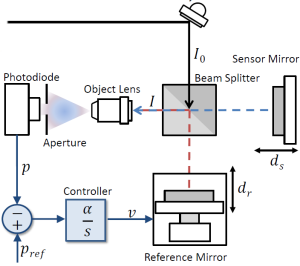
A. J. Fleming; B. S. Routley
A Closed-Loop Phase-Locked Interferometer for Wide Bandwidth Position Sensing Journal Article
In: Review of Scientific Instruments, vol. 86, pp. 115001(1-7), 2015.
@article{J15f,
title = {A Closed-Loop Phase-Locked Interferometer for Wide Bandwidth Position Sensing},
author = {A. J. Fleming and B. S. Routley},
url = {https://www.precisionmechatronicslab.com/wp-content/uploads/2015/12/J15f.pdf},
doi = {10.1063/1.4935469},
year = {2015},
date = {2015-12-31},
journal = {Review of Scientific Instruments},
volume = {86},
pages = {115001(1-7)},
abstract = {This article describes a position sensitive interferometer with closed-loop control of the reference mirror. A calibrated nanopositioner is used to lock the interferometer phase to the most sensitive point in the interfer- ogram. In this con
guration, large low-frequency movements of the sensor mirror can be detected from the control signal applied to the nanopositioner and high-frequency short-range signals can be measured directly from the photodiode. It is demonstrated that these two signals are complementary and can be summed to
find the total displacement. The resulting interferometer has a number of desirable characteristics: it is optically simple, does not require polarization or modulation to detect the direction of motion, does not require fringe-counting or interpolation electronics, and has a bandwidth equal to that of the photodiode. Experimental results demonstrate the frequency response analysis of a high-speed positioning stage. The proposed instru-
ment is ideal for measuring the frequency response of nanopositioners, electro-optical components, MEMs devices, Ultrasonic devices, and sensors such as surface acoustic wave detectors.},
keywords = {},
pubstate = {published},
tppubtype = {article}
}
ment is ideal for measuring the frequency response of nanopositioners, electro-optical components, MEMs devices, Ultrasonic devices, and sensors such as surface acoustic wave detectors.
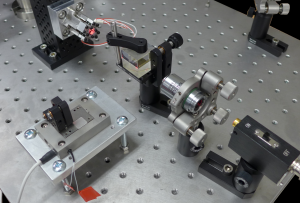
A. J. Fleming; B. S. Routley; J. L. Holdsworth
A Closed-Loop Phase-Locked Interferometer for Wide Bandwidth Position Sensing Proceedings Article
In: IEEE Multi-conference on Systems and Control, Sydney, 2015.
@inproceedings{C15a,
title = {A Closed-Loop Phase-Locked Interferometer for Wide Bandwidth Position Sensing},
author = {A. J. Fleming and B. S. Routley and J. L. Holdsworth},
year = {2015},
date = {2015-12-01},
booktitle = {IEEE Multi-conference on Systems and Control},
address = {Sydney},
keywords = {},
pubstate = {published},
tppubtype = {inproceedings}
}
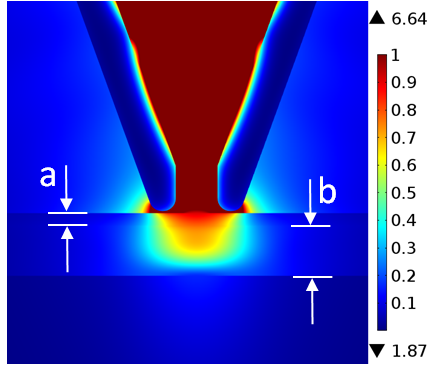
B. S. Routley; J. L. Holdsworth; A. J. Fleming
Optimization of near-field scanning optical lithography Proceedings Article
In: Proc. SPIE Advanced Lithography, San Jose, CA, 2015.
@inproceedings{D15a,
title = {Optimization of near-field scanning optical lithography},
author = {B. S. Routley and J. L. Holdsworth and A. J. Fleming},
url = {https://www.precisionmechatronicslab.com/wp-content/uploads/2015/05/D15a.pdf},
year = {2015},
date = {2015-02-26},
booktitle = {Proc. SPIE Advanced Lithography},
address = {San Jose, CA},
keywords = {},
pubstate = {published},
tppubtype = {inproceedings}
}

